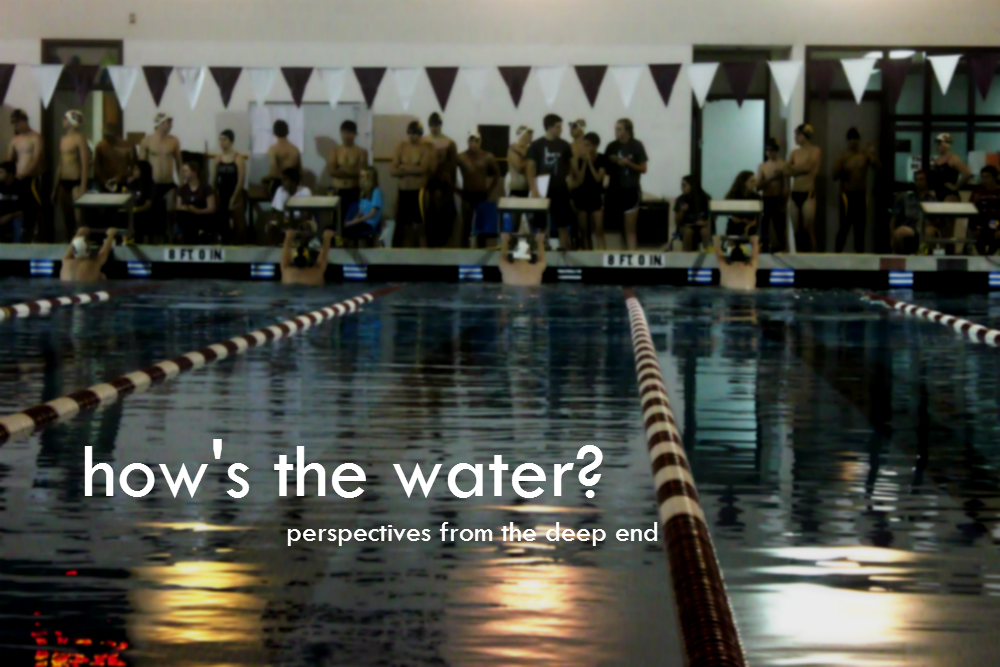Photo of CSMS natatorium provided by Tigerland Yearbook.
by Leah Crisman & Michelle Liu, executive editor & managing editor
It’s pretty much a done deal. The money’s not there, and the interest from the city isn’t either. For Consol’s swim team though, the city council’s decision to turn down a proposal for a new natatorium still stings.
“There’s something that goes wrong with [the current pool] every year,” swim coach Ryan Goodwyn said. “Probably the biggest problem with the pool is that they built an indoor pool but they didn’t ground it. They put all the plumbing outside, so even though it’s an indoor pool, it’s not safe if there’s lightning in the area.”
POOL PROBLEMS
Among other issues, Goodwyn names a broken heater that prevents the swimmers from utilizing their morning practice time at the CSMS natatorium efficiently. Junior Karly Waguespack cites faulty air conditioning as also affecting the swimmers.
“The kids who have asthma struggle a lot, and during winter break, you can see steam rising from the pool. It’s really bad. We get so hot that we open the doors,” Waguespack said. “If our bodies are out of the pool, if we’re kicking or our heads are out, we get headaches because it’s so cold against [our] faces. That definitely affects us.”
For senior Travis Rooney however, the AC problems are minor.
“It’s not as bad as getting chlorine burns on your lungs, because the chlorine concentration above the water is too high [and] the vents don’t work,” Rooney said. “Yeah, I get chemical burns on my lungs, a little bit.”
Some swimmers, like senior Rachel Scott, note that the pool’s attributes limit competitions held there; she and Waguespack mention a meet held there in which Highland Park attended.
“The looks on their faces when they saw our pool was just horrified,” Scott said.
Despite the state of the current pool, it remains the team’s only viable option, other than occasional practices at Texas A&M’s Rec Center. The CSMS natatorium doesn’t have space for two high school teams, so College Station High School swimmers must either transfer to Consol (and therefore lose a year of varsity eligibility) or forego membership on a school-sponsored swim team.
“Is it nice as a coach to be able to pull all the talent from the town into one school?” Goodwyn said. “Yes. But is that what’s best for swimming in the community? No.”
PRIOR REVIEW
A review of a possible new natatorium was proposed to the city council on June 27 of last year. The natatorium was suggested for competition uses (including diving and water polo) and for educational and city purposes. Likewise, a number of joint use agreements were suggested, and the cost of running the current pool was discussed in conjunction with similar costs in other districts.
However, the school board set the idea of a new pool aside in mid-August, claiming net losses as a major reason–about $300,000 per year, according to The Eagle.
“I’d like to see a justification of why [the natatorium] is $30 million more important than other things,” councilman Jess Fields told The Eagle at that time.
When voters reached the polls on the Nov. 5 general election, the $83.5 million bond package up for election included $20 million for a ninth elementary school, $3.5 million for renovations at Consol but did not include a new natatorium (which would have cost $30 million).
Instead, the district cited other important issues to cover in the bond package, namely the growing student population.
Other items discussed but not included were a maintenance and operations center, a gym expansion for Oakwood Intermediate School, a multi-use performing arts center and an ag science center.
A PLAN FOR THE FUTURE?
The Consolidated swim team regularly uses the CSMS pool for morning practices, but it also formerly functioned as a public pool for the city.
Despite the district’s findings on costs and losses, Goodwyn still believes that a new pool would benefit the school and the community, lending opportunities from teaching elementary schoolers how to swim to offering a lifeguarding class for seniors who want to obtain job skills.
“There’s a lot of ways you could use a pool if you had one, but I don’t feel like the district looked at it enough. Some people said, ‘It’s expensive, we’re scared of that. Money’s tight; we’re not going to do that,'” Goodwyn said. “They didn’t even give it a chance to get voted on, and that was my only disappointment. At least give us a chance to drum up support and try to talk the community into it.”
Goodwyn mentions that the swim team has advanced to state for the past eight years, and has had 14 All-Americans in the last nine years.
“It almost feels like when the kids are doing that well–we are one of the most successful programs on campus–shouldn’t those kids get rewarded?” Goodwyn said. “I know that’s a very selfish thing for a swim coach to say. Obviously, the swim coach wants it.”
This story was amended on Jan. 16 to reflect a quote from senior Travis Rooney, who was originally interviewed for this story.


